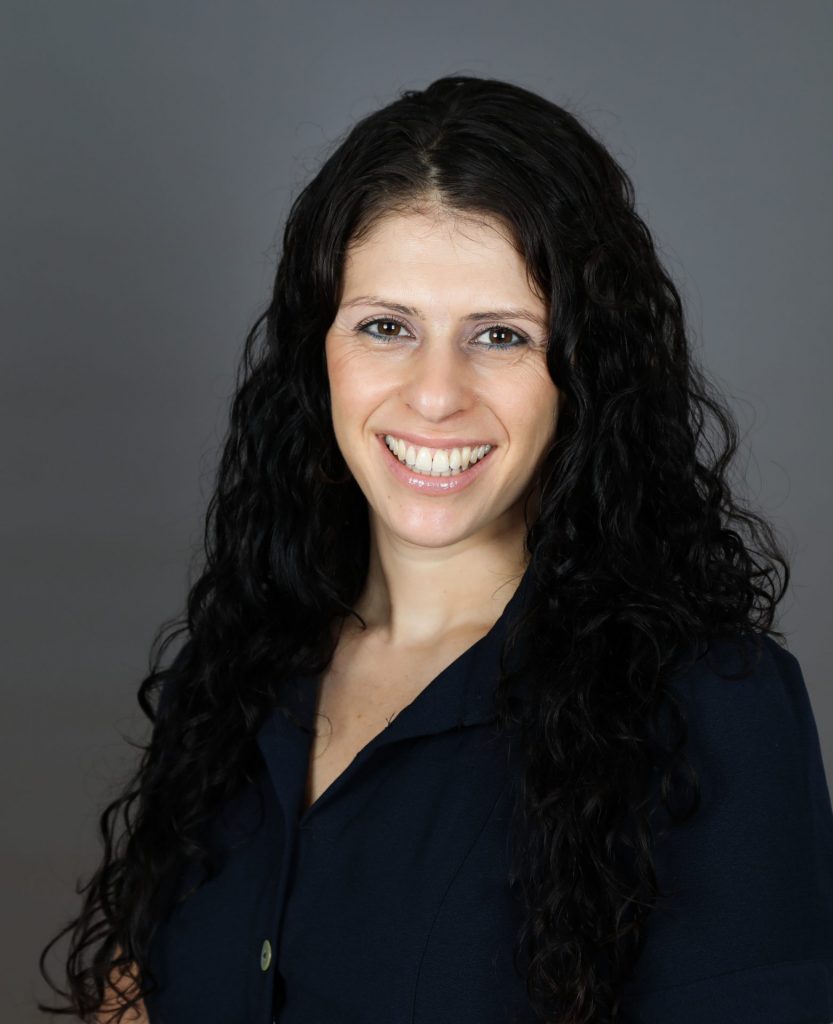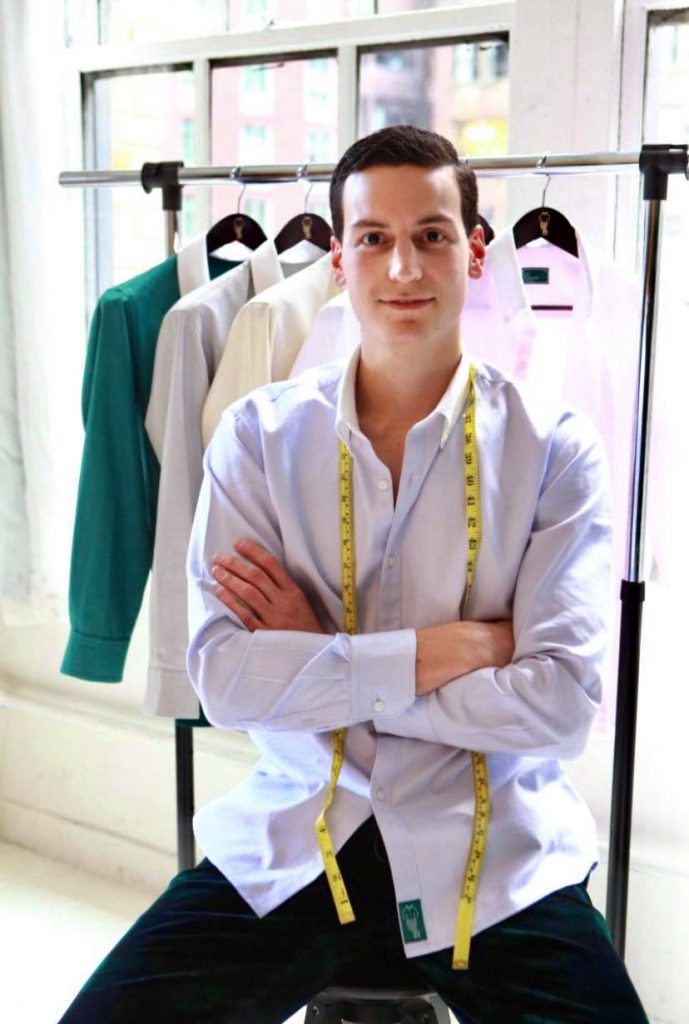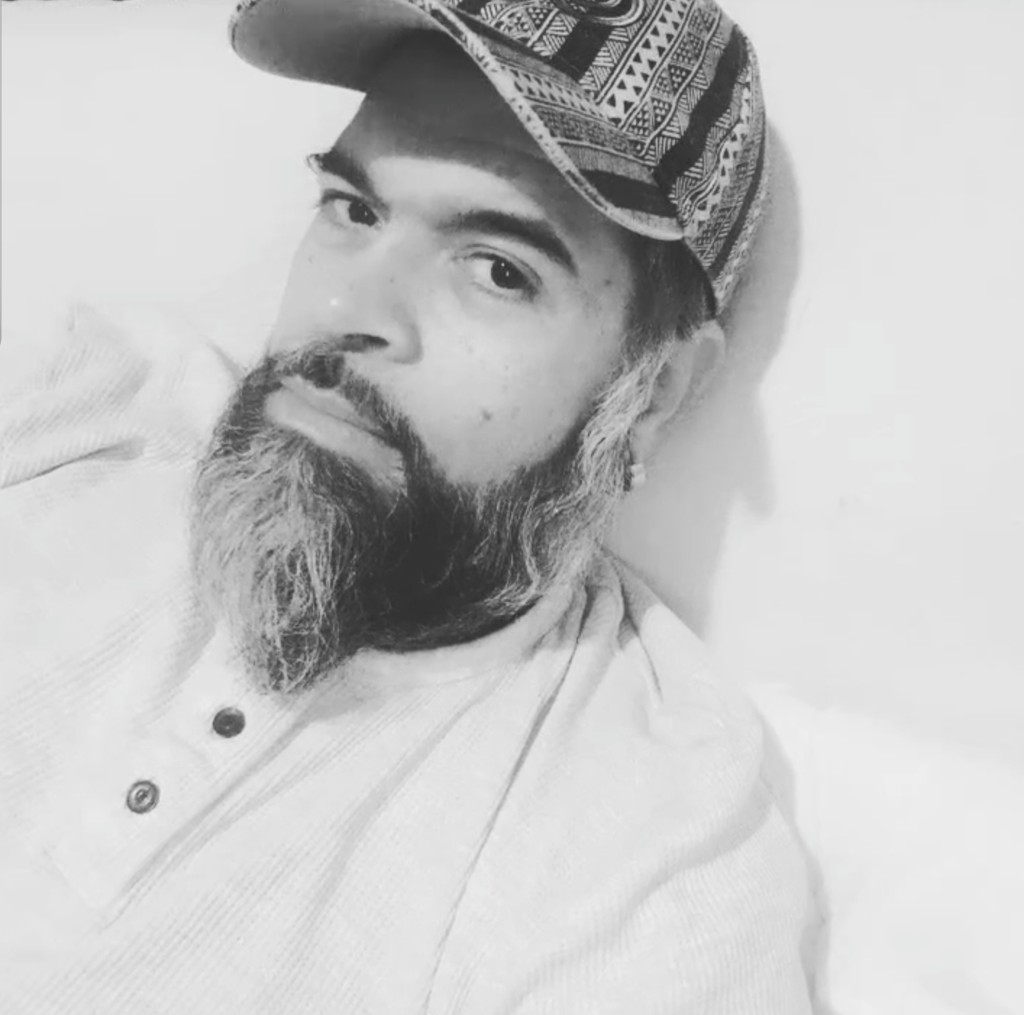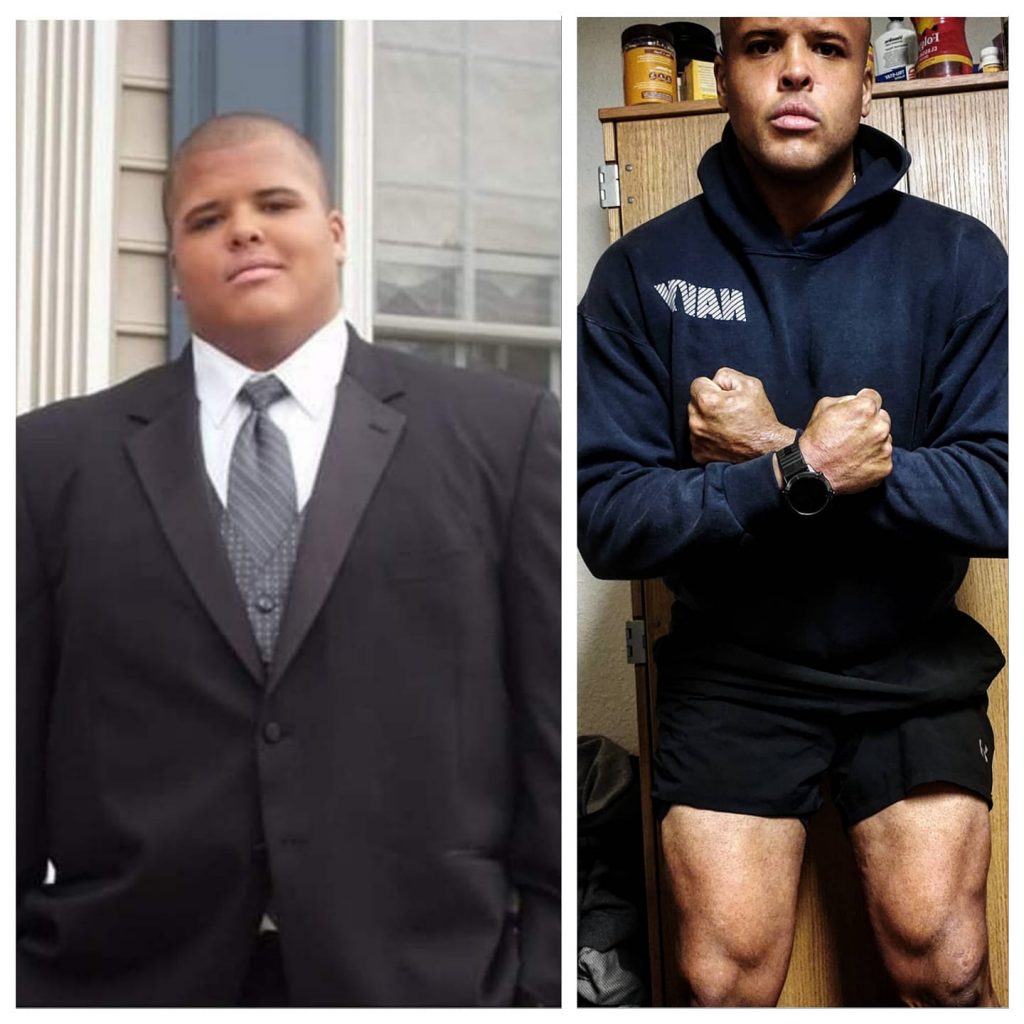Adi Wallach faced debilitating panic attacks that she admits made her think she was losing her mind. That was the impetus to her creating CalmiGo, a product that helps all humans manage stress and all kinds of moments of distress. In this podcast, Adi shares her story, and Tamar and Adi talk about how people are starting to slowly feel comfortable sharing their mental health battles, which still has negative stigma surrounding making these stories public.
TAMAR: Hey, everybody, it is Tamar. And today I am with somebody who hails from the other side of the world. For me, at least a little bit. I have Adi Wallach. She is originally from Israel, and she is in New York. She’s the founder and CEO of a wellness company called CalmiGo. And it’s so good to have you here. Thank you so much for joining me.
ADI WALLACH: Thank you very much, Tamar. I’m very happy to be here.
TAMAR: Yeah, I’m so happy that you’re here. So, tell me a little bit more. Introduce yourself a little more. I gave you a little bit of a brief intro. But go ahead.
ADI WALLACH: Sure. So, I’m the co-founder and CEO at CalmiGo. And I’m a biomedical engineer by background and working in the tech industry for more than 18 years. As you mentioned, and can be heard from my accent, I’m originally from Israel, and we are now based in New York City.
TAMAR: Cool, cool. So, tell me a little more what brought you to New York City.
ADI WALLACH: We came to New York City to start CalmiGo growth. Our market is in the US. We thought that New York City, being both really strong in everything related to the consumer industry and also to the health industry is kind of a natural place for us. My husband also found a postdoc at Columbia University. So, it was a really good match for both of us.
TAMAR: Cool, cool. So, I probably want to ask you a little bit more about how you determine that US is your target market? Especially because, you know, I am curious as a founder myself, on wellness in general, and how behind, if you will, if that’s fair to say, potentially Israel is from America right now? Is that fair to say?
ADI WALLACH : I think really, actually in everything related to wellness and health, I am not sure I can say that it’s behind. But definitely the market there is much, much smaller, and people relate differently to different aspects of wellness than the US. So, I think for example, we are around the mental health part of the wellness industry. And definitely the US is in some aspect, much more open to mental health issues. That is maybe because Israel is a really small place, I would definitely mention that our beta market was Israel, and it was very successful there. And we are still like selling in Israel. But I think similar to many other Israeli startups. Israel is a very small market. So, it’s almost never the main market of any company.
TAMAR: Right. I think that also in general, when you talk about specifically mental health, the US is only starting to get comfortable in sharing their stories. So yeah, you’re right. The word behind isn’t necessarily accurate. But at the same time, I think that eventually more people would probably open up to that. I think that and maybe I’m wrong. But I have a feeling, I think all of us, we all have our own emotional baggage. I do believe that most of us as human species, have issues with mental health. It’s just a matter of the comfort in sharing that to the public. And right now, it’s only starting in America but beyond, people are still very silent, closed in terms of wanting to make that public knowledge.
ADI WALLACH: Yes, I must say that in this aspect we were surprised when we saw how many people are open in the US about it. So, it actually surprised us and Israel is definitely behind in this aspect. I think one of the reasons for it is that Israel is a really small country, so everyone knows you. So maybe I don’t know if this is the reason. But maybe also workplaces I think are a bit more conservative about mental health issues. But I must say that here in the US, we were really surprised to see how many people are sharing our posts and tagging other people in our post, like offering them to look at our posts, and also in workplaces in many places They went to a packaging company where they came to talk about CalmiGo. So, they started saying “Yes, I’m having panic attacks, I’m having anxiety.” And they were not afraid to say that in front of their managers. And this was a really good surprise for me and I was really, really happy to see that there is change in this aspect because I think it’s really, really important. I can say that when I started sharing my personal experience with panic attacks, we received many letters from people saying, “Thank you for sharing it. It helped me so much to see that other people are suffering from it as well. And that I’m normal.” And for me, it was a really meaningful moment to see that just by sharing my story, we can help other people to feel better and to feel less lonely in this very lonely place.
TAMAR: Right. Yeah, that’s your company. And what you’re doing is pioneering the disclosure of people sharing their stories. I also think that I don’t know if I would have necessarily been comfortable sharing my own personal story until it became more socially acceptable in the last couple years. But if this was 10 years ago, I don’t think we would be sitting here together and having this conversation and I guess on your side, you probably might potentially feel the same way.
ADI WALLACH: Yeah, definitely. The first time that I shared my story was when a magazine in Israel asked me to share it, and asked my permission to share it, and it took me like 24 hours to take this decision because I felt that it’s an exposure, and it’s something people used to work with me when I had panic attacks. They didn’t know anything about it. I managed a team of seven engineers back then I studied at Technion. No one you and I think in general in the IT industry in Israel at least back then; it wasn’t something that you are sharing. So, it took me 24 hours, I think it helped me that I wasn’t in Israel anymore. And also, at that day, I took a decision that this is part of my journey. Sharing my story is part of my journey, and part of my CalmiGo journey, and part of my journey in being able to help others back. But it was a decision, it was something that I needed to think about and kind of came to a point with myself when I feel comfortable and strong enough for sharing it.
TAMAR: I mean, I’m still having conversations with people that are totally still in a vulnerable state where they just do not feel comfortable to share. And while this podcast exposes people who are comfortable and for the most part are able to embrace their whole selves with the scars and the pain and eventually they come back to me and they say thank you so much for giving me this opportunity in the spotlight and this microphone to say things that have been on my mind, that on my conscience for a very long time. It’s very cathartic. It’s very healing. But there’s still other people that still struggle and they have difficulties in getting that comfort to recognize that this might be actually a step toward to their healing. But anyhow, we talk about your story, we talk about the fact that your business does mental health and tell me a little more about your story and what exactly CalmiGo does.
ADI WALLACH: Sure. So, my story started when I was a student, Higher Ed. People in panic attacks and I desperately needed and wanted drug free solution. And the first time that I had panic attacks was when we went to the movies with friends of mine and I actually didn’t know that what I’m having was panic attacks. It was a Brad Pitt movie. I would never forget it probably. And I actually felt that I’m losing connection with reality. I thought that I’m losing my sanity. My heart was racing, I was barely able to feel my legs and hands. But what was most important for me was the thought that they have and that I’m kind of losing connection with reality. And I was barely able to go back home I didn’t tell the friends that were with me because I was too embarrassed to share, too afraid to share and I tried to go to sleep. It took me like a few hours but at the end my body was so exhausted from everything hurt and everything that it brought with it and they just they fell asleep and they woke up the morning after exactly the same. So, I still felt that I’m losing connection with reality, that I’m losing my kind of clear mind. And I decided that I want to go to my parents’ house as fast as possible to be able to say goodbye before I’m not here anymore, at least not here. And it took me like 5 hours to do the 40 minutes drive and they came to me my parents house, and I ran inside and I found my mom and I told her, “Mommy we must talk. I came to say goodbye because I’m losing my sanity. These are the last hours that I’m able to kind of talk with you, as usual. And she started laughing, which was kind of a weird experience. For me, I felt like almost 48 hours of debilitating fear. But my mom is a physician. So, I was used to kind of our normal reactions to things that I’m doing.
And she said, “Don’t worry, you have a panic attack.” And they never heard about panic attacks before. So, she explained to me a little bit about that. It helped just a little bit but not too much. I was like inside this terrible fear and feelings. And this was when it all started for me. And this first panic attack started a period of intense panic attacks, like 7, 8 panic attacks a day. I lost weight and it was a really frightening period for me. And I was very worried of the side effects of the medication. Said a doctor or physician, I’m usually not reacting very well to drugs, usually having all the side effects. So, I was terminated to try any other solution that I was able to find, which is not medication. I went back to yoga, and I went to therapy and to biofeedback. And I started doing relaxation technique for 3 times a day, 20 minutes, which was odd when you are a student and also working half time. And I changed my diet and took herbal supplements, really everything that I was able to find. And I was lucky to have access to all these solutions. However, I found that while all these tools were somewhat effective to decrease the frequency of the attacks, I was not able to use them to a successful degree in order to stop the attack while it was happening. And this was very frustrating for me. And what they also noticed is that I started to avoid specific places or situations that I thought may trigger an attack. So, I stopped going to the pool because I had a panic attack once when I swim. I stopped going to the movies because I had my first panic attack in the movies. And my life from outside looked the same. Actually, for me it was a very big change. And there was always the fear of when the next panic attack is going to happen. And fast forward a few years later, it was mainly at night for me. And I used to wake up my husband to help me to stop panic attacks because I wasn’t able to do it by myself. And one Saturday morning after a really terrible night of panic attacks I woke up and I thought “How come that they need to wake him up to help me stop the panic attack when everything he knows about anxiety, I taught him. So why can’t I do it by myself? And I know what I need to do. And at the same moment I understood that when you are anxious, you’re so overwhelmed that you are not capable of doing even things that you’re well trained in. And they also decided at the same moment that what they want to do in life is to create a product that people can take with them everywhere they go and use it in order to calm down immediately without the need to use medications or being dependent on other people. Like I kind of wasn’t in my husband. And this is actually how the idea for CalmiGo came about.
TAMAR: Cool. So, what does CalmiGo do?
ADI WALLACH: So CalmiGo is a drug free calming device that helps people to calm down in less than 3 minutes wherever they are. And we like to think about it as the drug free EpiPen for moments of distress. So, it’s something that you’re taking with you and whenever you feel stressed or anxious, or it’s hard for you to concentrate or to go to sleep, you take it out of your bag or your pocket and you use it for 3 minutes and it calms you down immediately. And this is the unique thing about it because there are many other stress management solutions that you can use for training. But CalmiGo is something that you not only use for training, but you can also use in the moment in order to calm down immediately. And the way it works is by implementing 3 very well-known techniques for stress and anxiety reduction. The first one is breathing regulation. And CalmiGo guides the users to extend their exhalation length, effortlessly. And there is a learning mechanism that adapts the feedback and adapts the device to the user performances in real time in order to make sure that it’s effective for a 17 years old swimmer, but also for a 65 years old smoker. Because definitely the breathing pattern of different people is very different and their needs is very different. So, this is one thing that it does, it regulates the breathing in a way that activates the parasympathetic system in our brain which is the system that is responsible on relaxation. So, this is the first method. The second method is multi-sensory stimulation, which is also called grounding. When people are anxious or stressed, their senses are overwhelmed. And CalmiGo is designed in a way that gently stimulates all the senses except the sense of taste. And by doing it, it effectively detaches the users from the state that all their senses are overwhelmed to a common focus state. And this is also a new method that is used today by health professionals. They instruct their patients to look at the pictures or listen to the voices in order to kind of engage the senses. So CalmiGo is doing it just by the way it is designed. And the third method is a relaxing scent. So, we are using unique technique that enables us to embed pure aromatherapy oil into a solid element. And we are using scents that were proven to enhance relaxation in just a few seconds. And as you probably know, our sense of smell is really unique in the way that it activates us both therapeutically and emotionally. And we wanted to add these methods in order to achieve this immediate relief. So, the combination of the breathing regulation with the grounding technique with the relaxing scent, is what enables us to provide immediate calm to our users in less than 3 minutes.
TAMAR: That’s a cool testimonial to your products. How does it work for you? In general, this helps panic attacks. But in general, what’s your panic attack level, if you will, right now?
ADI WALLACH: Sure. I don’t have panic attacks anymore. I had my last panic attack I think more than 3 years ago. Yes, almost 4 years ago. And then it was quite a short one. I was able to pull out, come and go very fast, since I use it. But since then I don’t have panic attacks anymore. And it’s important to say that the idea for CalmiGo came about as a result of my personal experience with panic attacks that the method that we are using are effective for any kind of distress. So, whether you are stressed or anxious or you have some problems or difficulty going to sleep, from the body perspective, those are all kind of the same stress response in different levels. And CalMigo helps you to calm down no matter what the reason for the moment of the stress is or what is the source of it.
TAMAR: Yeah, so do you know what might have for you personally triggered your panic attacks and like what exactly because you say it’s been 3 years, do you know what has changed so that you don’t necessarily have to deal with them anymore?
ADI WALLACH: Yeah, so I think I know that what stopped them completely was the fact that they had become comical. And it’s something that’s not just specifically for my story, but we know that in many cases, the problem is anxiety forming anxiety and not anxiety itself. So, usually people having an onset of anxiety and panic attacks are definitely good example for that. But very fast the problem became the anxiety from the anxiety and not the anxiety itself. So, the fear of the next panic attack actually keeps your body in distress mode and actually trigger more panic attacks. So, for me the end of my panic attacks came when I was able to take CalmiGo with me and know that whatever happened, I have something that can calm me down. So, I stopped being afraid of panic attacks. And once I was not afraid from them anymore, this is when they stopped. So definitely, this is my story. And we definitely see it also with other users as well. If I go back to your question why it all started, in my case, my boyfriend back then left me a few months before that. And when he left me, I decided that I’m not going to be sad about it. I decided that I don’t have time for it. As I mentioned, I was a student at the Technion Technology Institute of Israel, a really demanding place. I managed a team of 7 engineers at the same time. And I said to myself, “Okay, I’m going to be over it in 2 months, I’m not going to die because of it. I’m going to take things forward, and I’m not going to waste time on being sad for something that I’m going to overcome anyway.” It was a nice decision, but probably my soul was not ready for such kind of pushback, I think. And we know that in many cases, when you don’t give place for sad feelings, they find the way out in other channels. So, I definitely think that this was the reason for my panic attacks, the fact that I didn’t give a place for these kinds of emotions.
TAMAR: I think of your story in terms of why they were able to stop. It’s psychologically, the phrase that they use a lot, anticipatory anxiety. You’re always anticipating that what you fear is usually going to be worse than what actually happens. Yeah, it’s just like people who are afraid of flying, and I can say I am one of those people, or I have been one of those people. I’m not really entirely sure. But you know, stepping foot on a plane for some people is hell, and then the flight is over. And yet they’re still there, they’re always afraid of the next flight. Yeah, it’s nice to know that you really have a solution that literally takes that entire anxiety away. That’s pretty, pretty cool. And very, very powerful. So, kudos to you.
ADI WALLACH:Thank you, thank you very much. I was very lucky to have this experience and to be able to combine it with my engineering background in order to bring a solution that can help people.
TAMAR: Yeah, I’m definitely gonna try because I can’t say I have panic attacks. But I mean, we all have general stress and anxiety. And I’m very, very curious to see what this could do in order to alleviate that. So, it’s compelling for various reasons. I mean, you don’t necessarily need to focus on that niche market of folks who are suffering from panic attacks. You are literally an everyday product which is really cool.
ADI WALLACH: Yeah, we are definitely coming for that. It’s not for a specific situation. And you mentioned like fear for flights, and we have many users who are suffering from fear of flying, and they love CalmiGo because they can take it with them to the airplane and use it during the flight. So, we always recommend them to use it before the flight because usually the fear starts a few days before the flight. And it’s hard for them to prepare for the flight because of that, but they love it because they can take it to the airplane and use it whenever they feel that the stress kicks in.
TAMAR: Yeah. And I, as someone who has been afraid of flying, actually took a course called Freedom to Fly. It was given at the Westchester County Airport, which is up here. It’s a five-week program about 3 hours every Wednesday, where they talk about elements like panic attacks and people who have the fear and they’re trying to alleviate your fears. So, one time a pilot comes and she talks about all these little things about what really happens with the plane. And then they talk about things that you really don’t know about because it’s not an indication. We talked about why there’s turbulence, it’s usually because the air is different or you’re on top of a mountain but it’s literally driving. Your road is the sky. But they also give you some physical products to help you with when you’re actually in the plane. So, they gave me a hair roller because if you put in your hands that sensation of those little prickly things on your hand supposedly help alleviate the fear. And it’s also silly putty. Yeah, those are things you can bring on the plane. But this is like something else, that seems to be a lot more helpful. And they do talk about breathing exercises. So, this element is built in. And then there’s all those other things. So, for me personally, it’s totally compelling. And it’s cool, because yeah, I can get on the website. It’s pocket size, it’s very easy to trade. It’s portable. So very, very cool.
ADI WALLACH: Yeah. And it’s actually great that you mentioned breathing exercises because this is the base for CalmiGo. Many people ask me, “What is the difference between doing breathing exercises to using CalmiGo or why CalmiGo is better. And we know that the problem with breathing technique, which was my problem as well, is that people are able to use them very well for training but when the moment comes, they find it really hard to use breathing technique in order to calm down. And in the recent years, there were a few studies about that. And we know today there is also like a professor in Columbia that is doing a lot of work about it. And we know today that one of the problems with breathing technique is that it requires concentration. Because for example, if you’re using the boxing breathing technique, you are counting like you’re exhaling for 4, and then you stop for 4, and then you inhale for 4. So, when you’re counting or you’re trying to control your breathing, you’re concentrating and you activate the sympathetic system in your brain, which is exactly the system you’re trying to quiet. So, when you want to calm down, you want to quiet the sympathetic system, and you want to activate the parasympathetic system. But by concentrating, you’re doing the opposite thing. And this is also why many people who are trying to use breathing technique feel that it makes them more stressed or anxious, because from my experience, I tried to control my breathing, but I wasn’t able to do that. So, I thought, “Okay, maybe this time, it’s not a panic attack. Maybe this time, I’m really getting insane.” It was kind of a vicious cycle. So, this is one thing with breathing technique. And also, the other thing is that breathing technique can adapt to the user performances in real time, because there is no technology there. So, if we take the, again, the example of the boxing technique, so exhale for four might be not enough for a swimmer and might be too much for me when I’m sick. So this is the other issue. So definitely, I think the breathing technique is an amazing tool. But the advantage that CalmiGo has is that it doesn’t require concentration, and kind of does the work for you according to your specific needs.
TAMAR: Right. That’s so cool. Very, very cool. So, you talk about how you’re doing this. Now, I assume you probably had some interesting career trajectory that brought you there. So, tell me a little bit about that.
ADI WALLACH: Yeah, so I started actually in the defense industry. So, I worked like for 10 years for Elbit Systems which is the biggest private defense company in Israel. It was amazing experience. I think Elbit will always stay as home for me in a way. And I started as a user interface kind of, not a designer but user interface creator or doing the definition for the user interface. I became an engineer and very fast, I then went to the management kind of path. And many management roles in the engineering department and in the R & D Department. And after 10 years, I decided that I want to leave the defense industry, although I love that very much because it’s really a different industry than all other industries. And they moved to work and develop 3 D printers. And this was very, very different. That was a really great experience for me as well. I learned a lot about business and also about everything related to research and development, but very different from what they did in the defense industry. And then when my first daughter was born, I decided that this is the time to take the idea of CalmiGo and make a product out of it. So, this was the change that I did. And I stayed in the tech industry in a way. But this was actually the first time that I did something related to biomedical, which is my degree. And also, the first time that I stopped being an employee and opened my own company.
TAMAR: How did you iterate that? How did you know to add those three elements?
ADI WALLACH: So, when we started thinking about what can we implement in order to provide immediate relief, we immediately knew that we want to incorporate the breathing technique because we knew that it was very effective for me, but I wasn’t able to do it by myself. So, we wanted to find a solution that will enable us to implement this method but take the advantages without the disadvantage. And then we started to do research and to look for other methods that are really effective in providing immediate calm. And this is how we decided to implement the grounding technique, and understands.
TAMAR: So, let me ask you the other question that I normally ask: You, as somebody who has kids, who’s building a company, there’s always this requirement these days, we all need to take time for ourselves. So, I know this product itself is sort of a self-care regimen. What do you do in addition to this for your self-care regimen?
ADI WALLACH: Sure. I think there are 2, 3 main other things that I’m doing. First of all, I’m working out like at least 3 times a week. So, it’s a shorter workout than I used to do before. But this is kind of something that I always make, make sure to do. And this helps me a lot. I’m doing sports from a really early age, and I never stopped. And I can’t live without it. So, this is definitely one thing. I think the other thing is to walk outside. I’m doing my best to walk as much as I can. And I have kind of a rule that if it takes me less than 10 minutes difference to walk than to take the subway or take the bus or a taxi, so, I prefer to walk. And living in New York City makes it much easier, I think. Yeah, so yesterday, I was able to do like 12,000 steps before 3 pm just by walking between different meetings. So this is definitely part of my kind of self-care routine and kind of making sure that I’m keeping myself in a good state. And the last thing in addition to CalmiGo is that I’m really spending time with my girls. I’m trying to disconnect myself from my emails and my phone for like 2 hours to spend the time with them. Like I am disconnected a little bit and not always work. I definitely feel that the difference.
TAMAR: Yeah, I hope given that you’re in the city, you’re walking in Central Park a lot because it’s so nice right now. I know the Great Lawn is closed. But it’s just amazingly green. You know, it’s funny because I used to live literally a block away from you. I was on 116th on Broadway and 116th of Riverside. And I was also on 22nd in Amsterdam. I was all over the place when I was a student on campus, but I never took advantage of walking anywhere. You get very lazy because there’s so much public transportation everywhere. There were the buses, there’s the subways. And I’m glad that you’re getting out there but I hope you’re also going a little a couple of blocks east to check out Central Park because it’s totally beautiful, especially like any time of year, but especially now.
ADI WALLACH: Yes, I’m running into Central Park and every time that I run there, I’m kind of thinking to myself, I probably did something right if I get to run. So definitely I can say that it’s my favorite place in New York and I love running there whether it’s snowing or raining or a really beautiful sunny day. It’s really an amazing place and it’s so different than everything around and it makes a big difference to be surrounded by trees and nature for like half-an-hour in the middle of the city.
TAMAR: I wish I was a runner when I was living in the city just because I want to be able to run more in the city, amongst other people who are runners. Right now, I’m trying to kind of adopt running as a hobby. And I don’t see very many people. Sunday, I went on a run, and I saw all these people, all these bikers were looking at me, but there is not a single runner. And it would be nice, you know, when you’re fit. For those who are not familiar with Central Park, look at a map of New York City and just look where Central Park is. It’s literally this massive area between the city. And it’s just a great place to ride, it’s a great place where everybody is doing the same things. And there are designated bike lanes or designated running lanes, there’s designated walking paths. You find a community just by virtue of walking there, and a lot of people cannot find their own community. So that’s just something that I think is just beautiful.
ADI WALLACH: Yeah, definitely.
TAMAR: Yeah. So, one thing I probably want to end with, unless you have anything that I haven’t sort of touched upon, but you have it.
ADI WALLACH: Maybe worth mentioning, important mentioning that a full team wasn’t able to do without them, I think was being able to bring to the market, and to be able to provide the support and being able to help people even without knowing them. Thanks to the team that is doing a really amazing job in making CalmiGo a reality.
TAMAR: So, if you could give advice to your earlier version of yourself, maybe pre-college version of yourself, what would you tell her,
ADI WALLACH: the first thing that comes to mind is to invest more in being rather than doing. Although I’m a real doer, I can’t imagine my life with less doing but definitely appreciate the quality of being more.
TAMAR: Awesome. I think that’s great. I think a lot of people are focused on getting things done, but not necessarily invested in building themselves and strengthening themselves and working their minds and appreciating what they have. So, I think that’s a great takeaway.
ADI WALLACH: Thank you.
TAMAR: Yeah, thank you so much. This was amazing. I am very excited about what comes next for you. And I mean, I don’t even know what to say there’s so much goodness that I think that we’re going to be able to extrapolate from your teachings and your learnings and, and it’s been really an honor.
ADI WALLACH: Thank you, thank you very much Tamar for having me.
Podcast: Play in new window | Download (Duration: 38:20 — 70.6MB)
Subscribe: RSS






